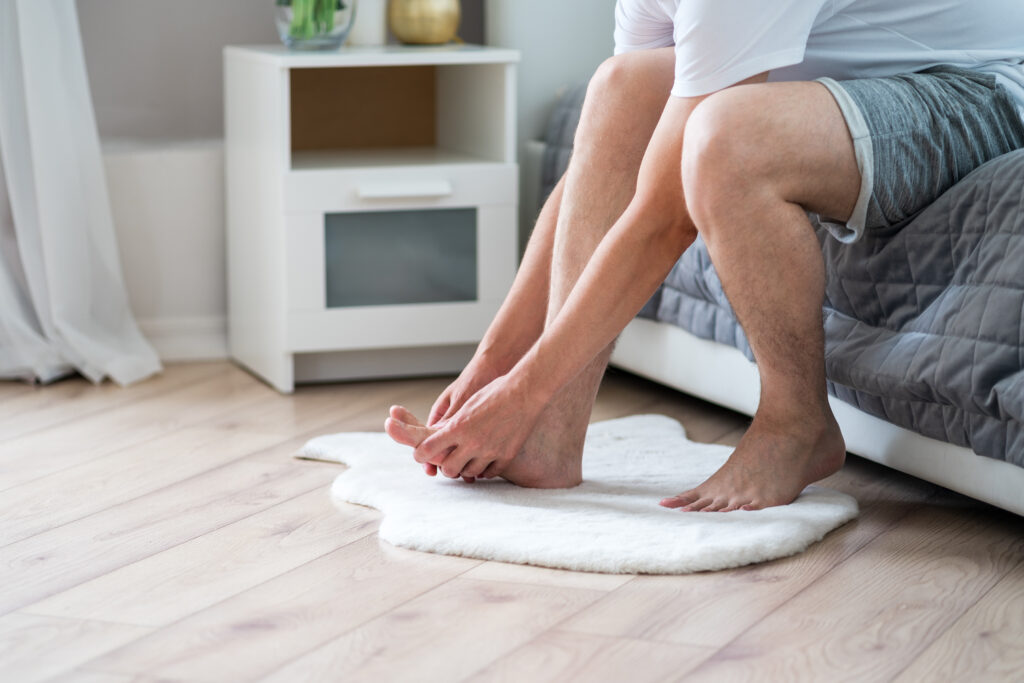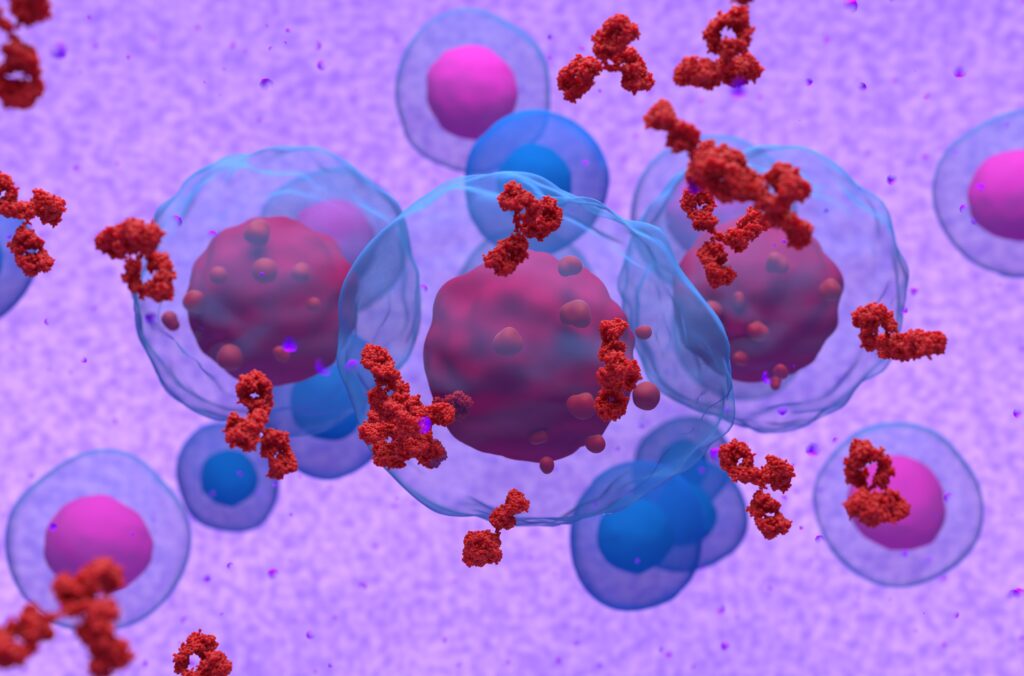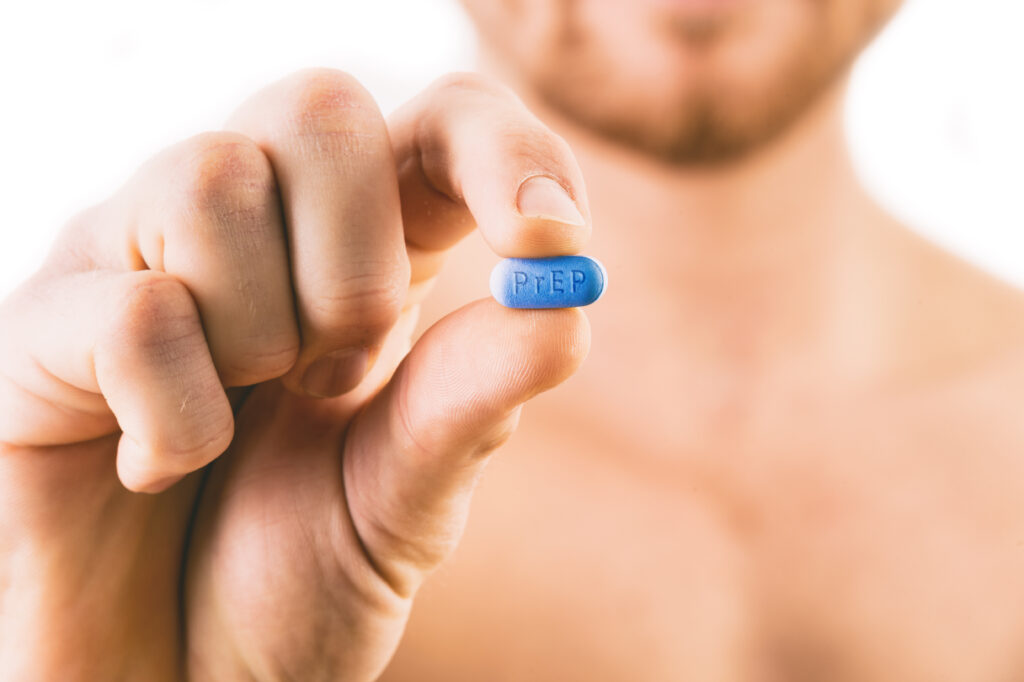
There are over 100 different variations of arthritis, yet one common form is known as gout. Gout is caused by a build-up of uric acid (urate) in the body. Urid acid is produced when the body breaks down purines, which are found in foods like bacon, turkey, seafood, and alcohol. Given time, elevated urate levels form spindly crystals in the joints, causing severe pain.
While there is no cure for gout, treatment can help reduce flare-ups and decrease pain during intense gout attacks. In addition, adopting a healthier diet, staying hydrated, and reaching a healthy weight can minimize gout symptoms and prevent the development of gout in those at risk. These are the symptoms of the condition, its current treatments, and preventative measures that can lower your risk for gout.
Symptoms of Gout
Gout symptoms typically arrive in the form of gout attacks or flare-ups, during which sudden, severe joint pain strikes, typically in the toes, foot, or lower limbs. Flare-ups often begin at night and may take up to two weeks to resolve.
During one of these episodes, symptoms may include:
- Intense joint pain (worst in the early stages of a gout attack)
- Swelling and tenderness around the joint
- Stiffness or limited mobility
- Red, warm skin over the inflamed area
The symptoms of gout will present differently at different stages. Presymptomatic gout is known as hyperuricemia, during which crystals have grown on the joints, yet the pain has not begun. Flare-ups are followed by intercritical gout, where symptoms subside. Untreated gout can lead to tophi, damaging crystal deposits that form in the joints, under the skin, and inside the organs. This is why seeking an early diagnosis and beginning treatment immediately is crucial.
Treatment for Gout
Gout treatment aims to lessen pain during a flare-up, lower your risk of future attacks, and prevent the development of tophi crystals. Alongside a healthcare provider, each patient should develop treatment objectives that are mindful of their preexisting conditions, lifestyle, and goals.
When treating flare-ups, your doctor may prescribe medications to decrease symptoms. They could recommend over-the-counter anti-inflammatory drugs, such as Advil or Aleve, to intervene in acute pain. They may also offer colchicine, a prescription anti-inflammatory medication, though you should monitor this drug for unpleasant side effects like nausea and vomiting. Sometimes, doctors administer oral or injected corticosteroids for faster pain relief, though side effects can be severe.
If you have high uric acid levels causing observable joint damage, your doctor may prescribe medication to lower your urate levels. Uric acid medication can be highly effective but may also impact your heart, so it may not be recommended for long-term use. Your doctor should work with you to determine an ideal dosage for lowering your uric acid to an acceptable level.
Lastly, long-term gout management depends on altering your lifestyle. Primarily, making a change to your diet can have an incredible impact. Lessening the amount of processed, salty foods you consume should reduce the occurrence of gout attacks. If you’re unsure where to start, consider contacting a dietitian. They can support you in developing a nutritional plan that meets your needs.
How To Prevent Gout
Following a healthier lifestyle is the primary way to prevent gout. This includes eating foods that are lower in purines. Aiming for a diet rich in healthy, unprocessed foods and low in sodium can improve your gout outcome and reduce the risk of co-existing conditions like obesity and diabetes.
Maintaining a healthy weight is another way to counteract gout. Weight loss often occurs naturally on a low-purine diet, but you should determine your weight goals with a dietitian or healthcare provider. Crash diets or drastic weight loss in a short window can damage your overall health. Sticking to a gout-preventative meal plan and setting gradual, attainable weight-loss goals is ideal.
Another way to stave off gout is to stay hydrated. Studies have shown that dehydration can raise uric acid levels in the blood, making proper hydration crucial for those at risk of gout. You should aim to consume sixty-four ounces of water daily. You should also reduce or eliminate alcohol consumption altogether, as alcohol is high in purine.
Gout commonly affects those who have experienced obesity or diabetes, have a family history of gout, or consume animal proteins and/or alcohol in excess. Contact your doctor for next steps if you suspect you’re at risk. With a few lifestyle changes, you can lower your chances of living with gout long-term.
Resource Links
“Gout” via Mayo Clinic
“Gout” via NIH
“Gout” via Cleveland Clinic
“Arthritis – Gout” via CDC
“What is Gout?” via Penn Medicine
“Gout” via Arthritis Foundation
“What to know about gout” via Medical News Today
“Nonpharmacological Management of Gout and Hyperuricemia: Hints for Better Lifestyle” via National Library of Medicine





